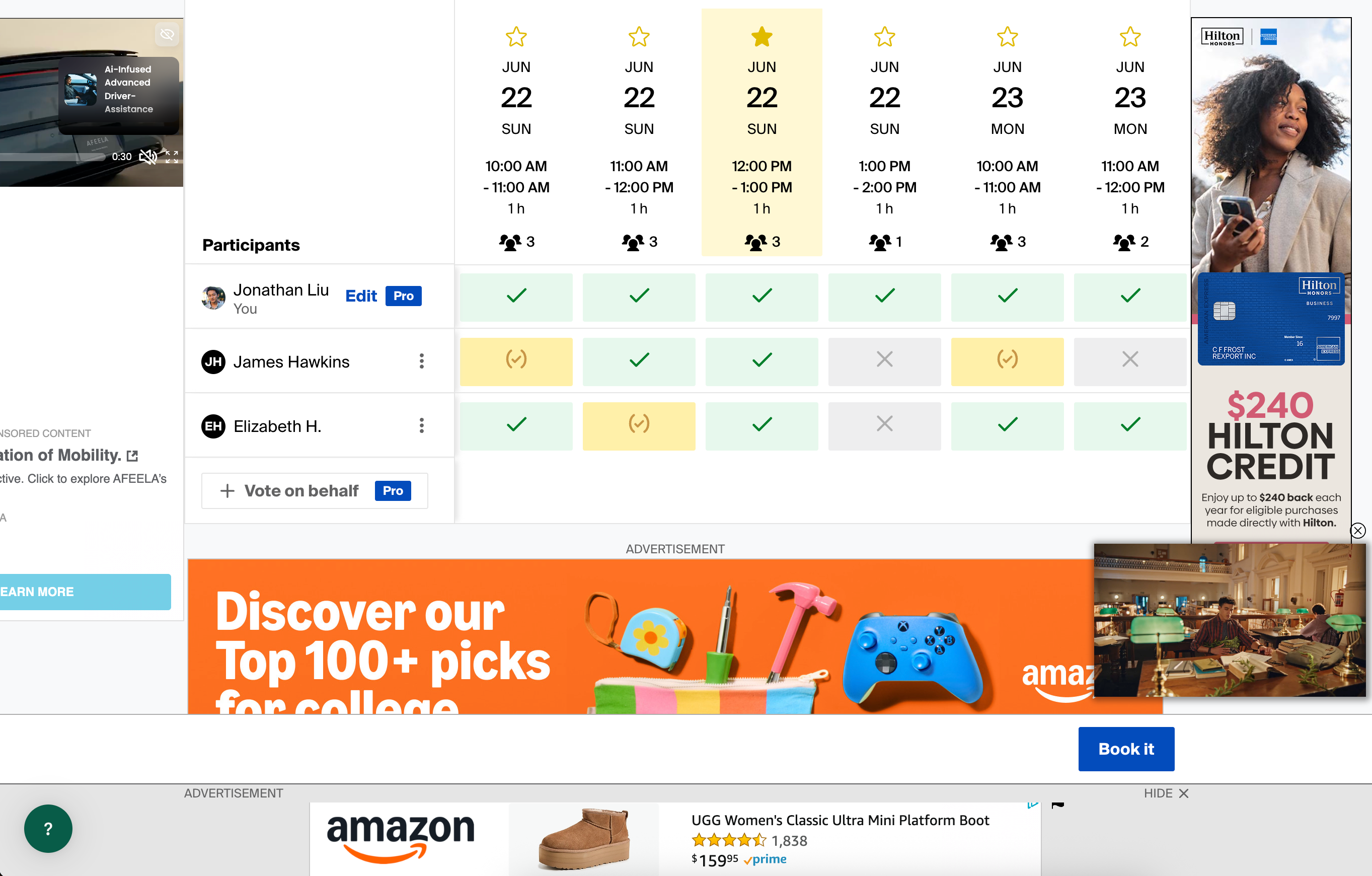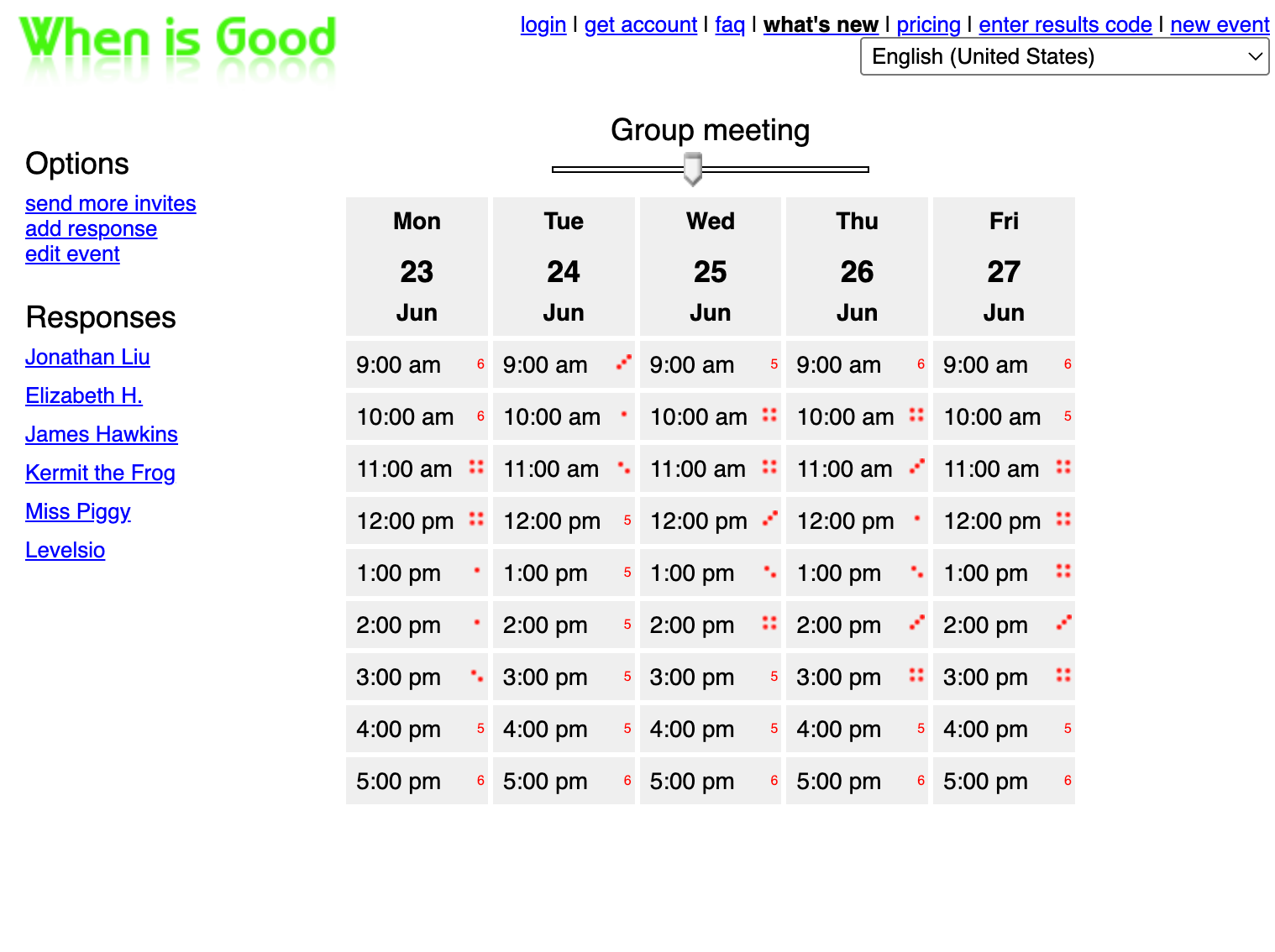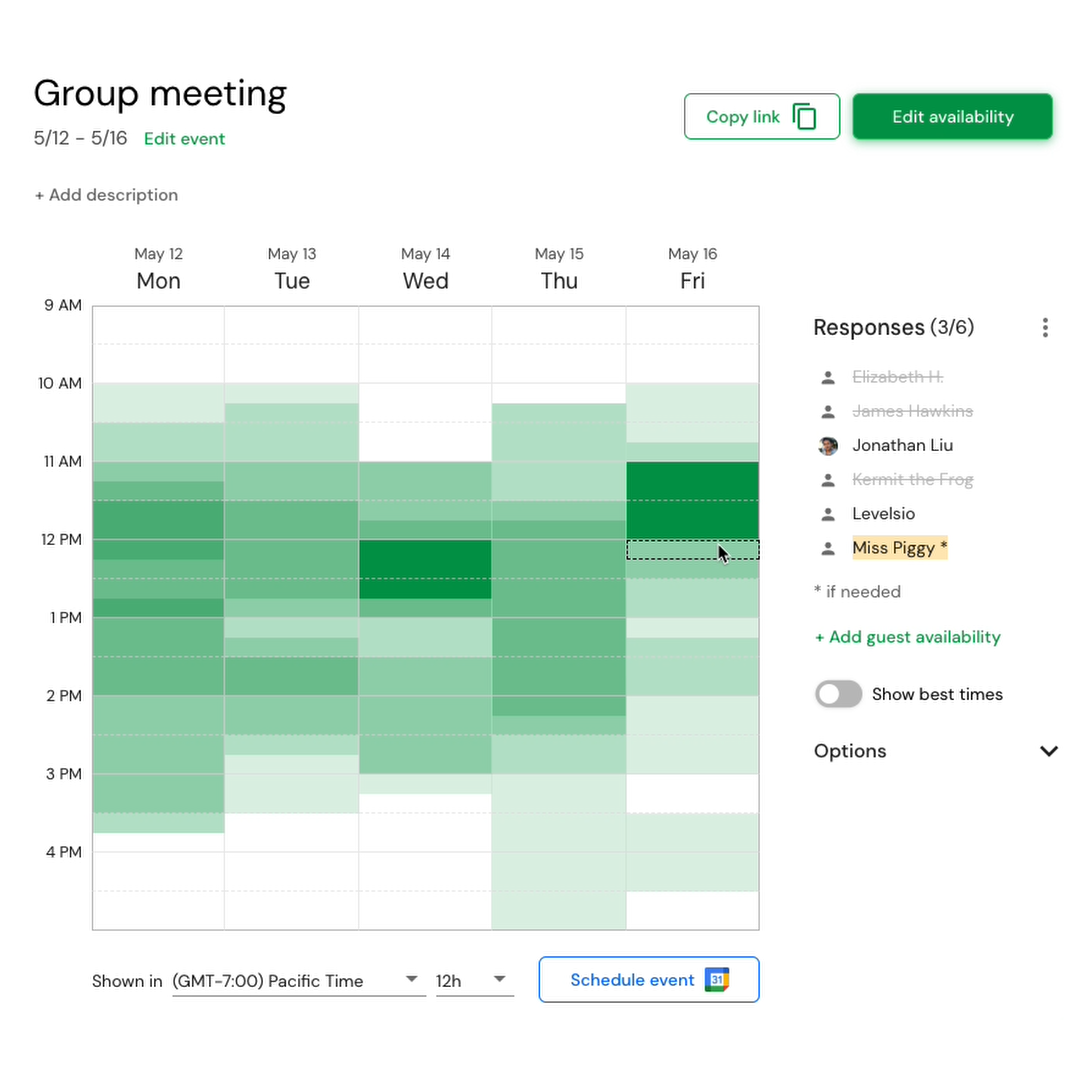Doodle vs WhenIsGood: Which Scheduler Is Better in 2025?

If you're searching for a simple way to find a meeting time that works for everyone, chances are you've run into Doodle and WhenIsGood. These two tools are among the most popular for group scheduling—but which one is actually better?
In this post, we'll compare Doodle vs WhenIsGood, break down their pros and cons, and introduce a third option—Timeful (formerly Schej)—that might be an even better fit in 2025.
Quick Summary
| Feature | Doodle | WhenIsGood | Timeful (formerly Schej) |
|---|---|---|---|
| Account required? | Yes | No | No |
| Ads? | Yes, often misleading | None | None |
| Setup speed | Slower, multi-step | Fast | Instant |
| UI/Design | Modern but cluttered | Outdated | Modern and minimal |
| Privacy features | Limited | Private responses | Private responses |
| Open source? | No | No | Yes |
| Final results view | Can be hard to read | Clear preference grid | Clear and color-coded |
Doodle: Familiar but Frustrating

Doodle is one of the oldest scheduling tools on the internet. It's polished and comes with integrations like Outlook and Google Calendar, but over time it's become bloated and commercialized.
Many users complain about:
- Misleading ads that clutter the page
- Required signups for some features
- A clunky process just to create a basic poll
- Confusing final tallies when comparing times
- Everyone can see each other's responses
If you need calendar sync or detailed availability features, Doodle can still work—but it's no longer the fast, friendly tool it once was.
Best for: Enterprise teams already paying for it, or people who need calendar integrations.
WhenIsGood: Private and Functional

WhenIsGood is beloved for its privacy features and simplicity. You don't need an account, and most importantly, only the poll creator can see individual responses—making it ideal for workplace scheduling or sensitive situations.
Pros:
- No signups required
- Private responses (only organizer sees who responded when)
- Fast setup
- No ads or distractions
Cons:
- UI is visually dated
- No calendar integration
- Limited mobile experience
- No email notifications or reminders
Best for: Workplace scheduling, sensitive meetings, or situations where you don't want everyone seeing each other's availability.
Timeful (formerly Schej): A Better Alternative in 2025

Timeful was built as a response to all the frustrations people have with Doodle. It's fast, open source, privacy-friendly, and doesn't shove ads or upsells in your face.
Like WhenIsGood, there's no need to sign up and it supports private responses, but unlike WhenIsGood, it's modern, responsive, and easier to read.
Why people are switching to Timeful:
- No misleading ads
- Clean, modern UI that works on desktop and mobile
- Minimal clicks required to create a poll and share the link
- Everyone's availability is clearly visible at a glance
- Calendar integration and email notifications + reminders
- Open source
Timeful is ideal for small teams, remote groups, students, and anyone who's tired of slow or cluttered scheduling tools.
Try it here: https://timeful.app
Verdict: Doodle vs WhenIsGood vs Timeful
- Use Doodle if you need calendar integration and don't mind a few ads or extra steps.
- Use WhenIsGood if you need private responses and don't mind the dated interface.
- Use Timeful if you want the best of both worlds—speed, clarity, privacy, and a clean, ad-free experience.
Final Thoughts
Choosing a scheduling tool shouldn't feel like a chore. Whether you've been frustrated by Doodle's complexity or find WhenIsGood's UI lacking, Timeful offers a refreshing alternative.
If you're organizing meetings regularly and want something that just works—give it a try.
